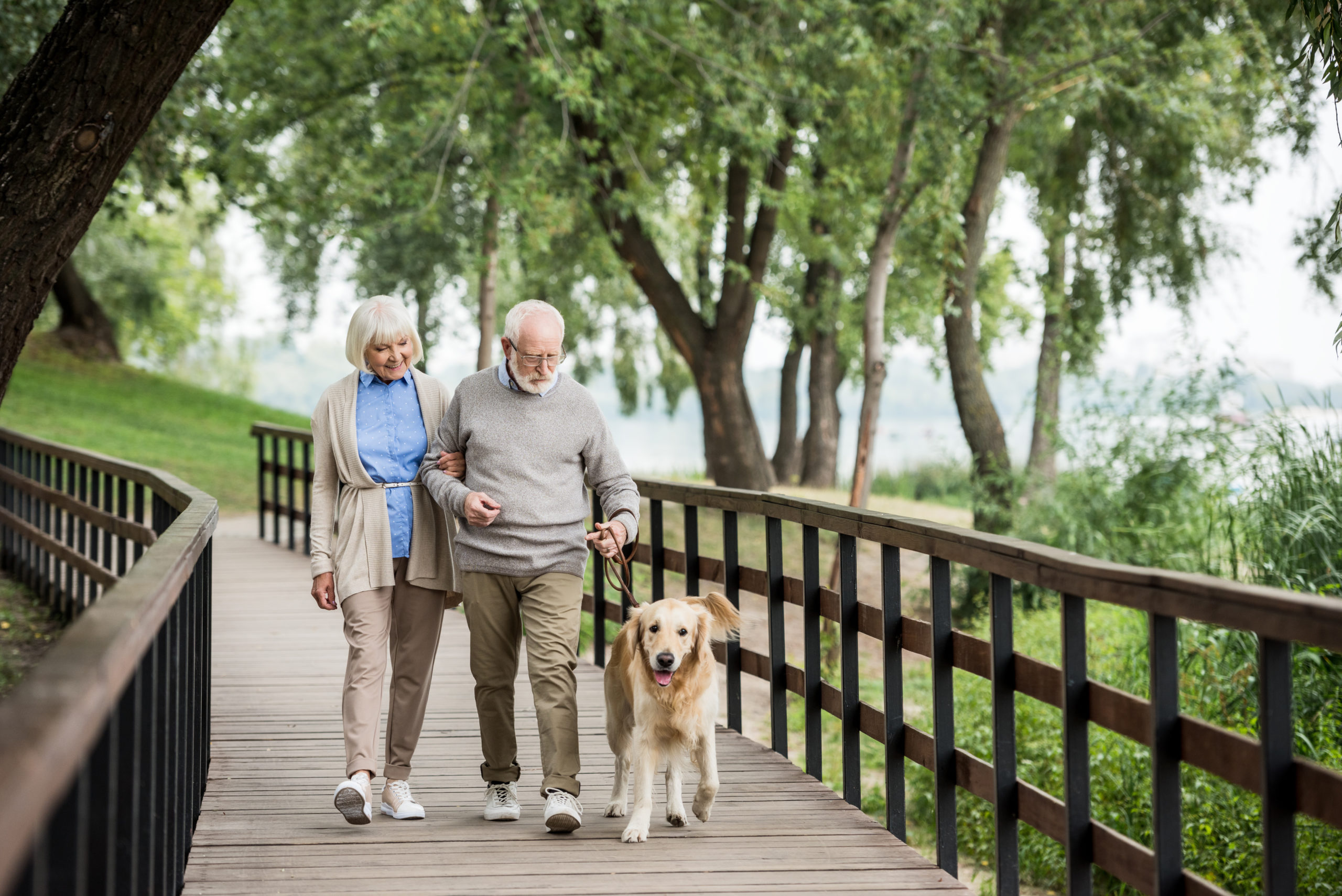Walking is the perfect older adult-friendly exercise – it’s low-impact, easy to start/maintain, and can be scaled to meet our loved one’s unique needs. Studies have long since shown that walking has many physical health benefits, helping them live longer, healthier lives. Newer research also suggests that walking also has many psychological health benefits. By keeping them both physically and socially active in their communities, walking can help curb feelings of depression and isolation that often plague older adults, giving them a better sense of social connectedness.

Walk About It & Talk About It
Like any exercise, this activity is not without risk. Older adults walking in their community are subject to the same fall risks and physical dangers of exercising at home with the addition of several new environmental hazards like weather and traffic. Despite these dangers, walking is a worthwhile exercise and can be safely managed with just a little planning.

Be Proactive When Considering Safety
As the leading cause of fatal injury in older adults, falls are a significant health concern for loved ones.
For many family members, the thought of their parent tripping and falling in an unfamiliar place where help may not be readily available is their worst nightmare. Despite the dangers of falling, there are many simple safeguards you can put in place to promote safe walking in the community.
- Invest in a pair of sturdy, comfortable non-slip shoes
- Take a walk and map out a path that is paved and level. This can help ensure there isn’t any tripping over curbs or falling on uneven pavement.
- Talk with neighbors in the community about a loved one’s walking routine to see if they’d be willing to serve as checkpoints for them if they needed assistance.
- Consider purchasing a medical alert device. If there is a fall on their journey, they can call for help with the press of a button. Talk with your parent about wearing an Apple Watch that is paired with your device so you can keep track of your their location if needed.

Keep an Eye Out & Look Both Ways
Traffic can be another hazard for older adults in the community. Adults with visual or hearing impairments may be at a higher risk of being involved in traffic-related accidents. We can be prepared to face these dangers with a few easy changes to a standard walking routine.
- Help connect a parent connect with a walking group in their area, so they always have one or more exercise buddies. As an added perk, this can even help a loved one feel more connected to their community!
- Ensure a loved one has access to the appropriate assistive technology. If they suffer from hearing loss, consider investing in an amplifier or hearing aid to help them listen for oncoming traffic. If there are visual impairments, make sure they have glasses (and sunglasses) for their walks to see any hazardous conditions in advance!

Stay Active with Weather Changes
Many older adults may be walking in less-than-ideal conditions as the seasons change. Rain, snow, and the sun can all pose unique dangers to our loved ones. Make sure they are prepared for the elements before they go for a walk.
- Provide sunglasses they can wear while walking. This can reduce glare and help them see better outside when it is too bright out.
- If night walking is preferred, consider clipping a flashlight onto their keys to help them light up their path. Check to make sure the way they are taking is well-lit by streetlamps.
- Keep sunscreen and bug spray by the door to remind a loved one to apply these before stepping outside.
- Don’t let rainy weather stop them from walking. Help them identify places they can walk indoors whenever skies are grey. Malls and museums are popular indoor walking venues that can provide older adults with social stimulation.

Stick to It, No Matter What!
One of the most significant barriers to walking can be motivating our loved ones to leave the comfort of their favorite chair. New exercise plans can be challenging to start up, but the right preparation can help set us up for success.
- Walk and talk with a family member or friend to keep things engaging.
- Work with a loved one to identify various paths they could take while walking to keep them interested and committed to walking.
- Try incentivizing walking with smart technology; use a pedometer to count steps and help them track their progress. Set a weekly goal with them and, if they reach it, treat them to an activity of their choice.
- Stuck on starting? Consider using a pre-designed beginner walking plan to alleviate the stress of coming up with something from scratch.




Leave a Reply